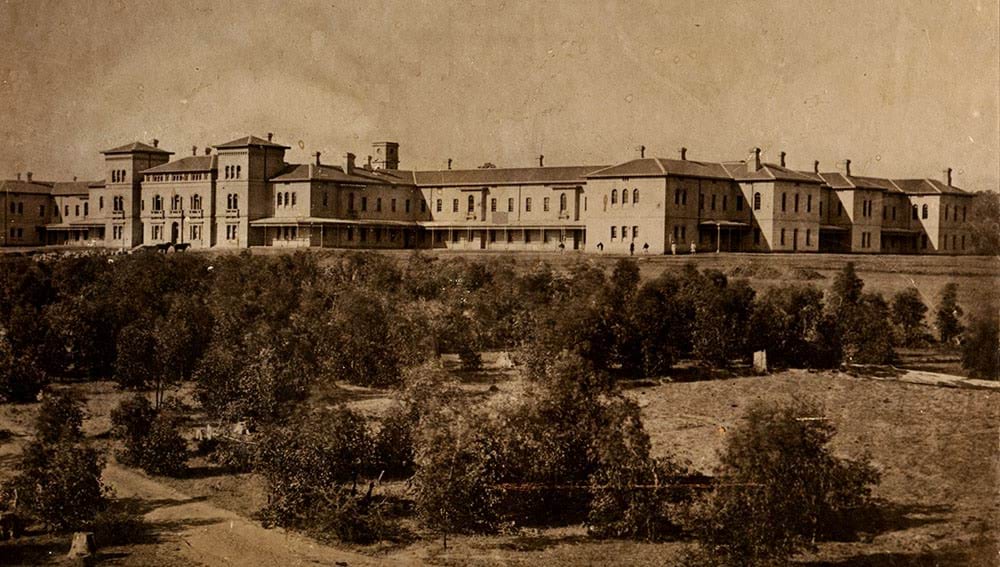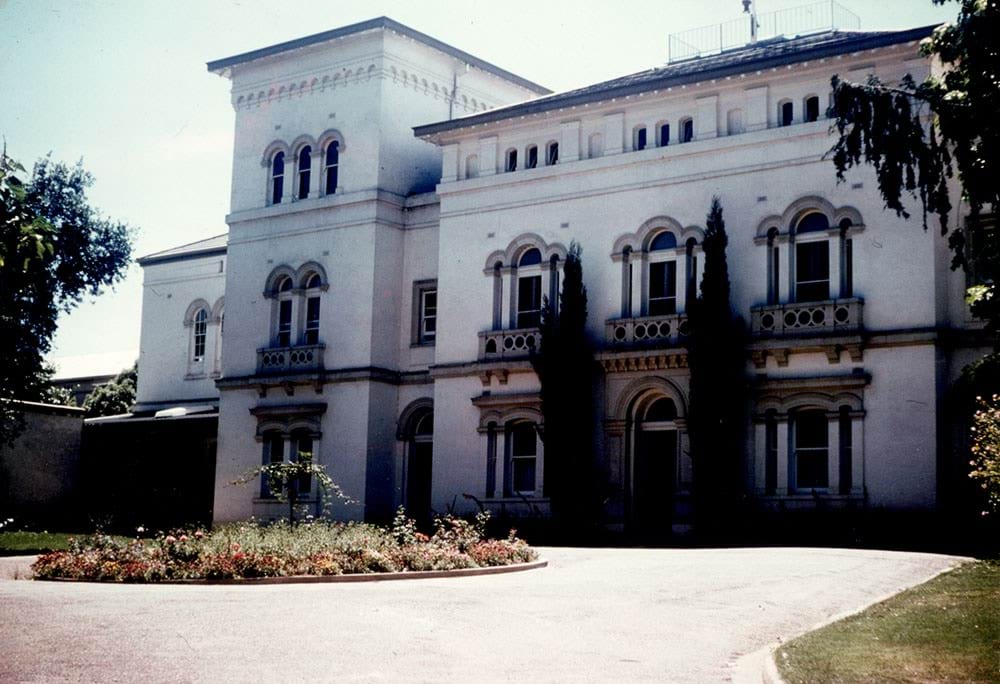Summary
- Auspices:
- Hospitals for the Insane Branch (1867–1905)
- Lunacy Department, located in Chief Secretary's Department (1905–34)
- Department of Mental Hygiene, located in Chief Secretary's Department (1937–44)
- Department of Health I (1944–52)
- Mental Hygiene Authority [statutory authority] (1952–62)
- Mental Health Authority [statutory authority] (1962–78)
- Health Commission of Victoria (1978–85)
- Department of Health II (1985–92) (mental health)/Community Services Victoria (1985–92) (intellectual disability)
- Department of Health and Community Services (1992–96)
- Name:
- Beechworth Lunatic Asylum (1867–1905)
- Hospital for the Insane (1905–34)
- Mental Hospital (1934–c.96)
- Beechworth Psychiatric Hospital - known as Mayday Hills (1977–c.96)
- Beechworth Training Centre (1964–95)
Beechworth Asylum history in brief
In October 1867, following lobbying by the Beechworth Municipal Council, the Beechworth Asylum opened for the reception of patients. Patients had previously been confined to the town's gaol due to lack of more appropriate accommodation.
As the first patients were admitted, the men were put to work as farm labourers, carpenters, blacksmiths, painters, shoe-makers and tailors, while the women worked as launderers, knitters, seamstresses and domestics.
From 1880, records indicate that recreational activities were introduced. In the ensuing years, additional buildings were added to meet demand for patients to be placed in the area.
In 1938, the Wangaratta Ladies Auxiliary formed and community members took an active role contributing to patients’ comforts and interests. In 1952, the Mental Health Authority established the “Open Door” policy, demolishing the perimeter wall in 1955.
By the 1960s, a Nurse Training School and adjacent Nurses’ Home had been established at the hospital, leading to major developments in nursing education.
In 1962, the Mental Retardation and Mental Hospital sections were officially separated.
In 1964, several wards were renovated, renamed and re-opened as a Training Centre specifically to care for and train more than 200 people with intellectual disabilities.
In 1977, the Psychiatric Hospital was proclaimed under the Mental Health Act 1959. In the late 1980s and early 1990s, the development of other residential options (day placements, education, employment, and recreational opportunities) meant there were fewer clients.
By 1992, all intellectual disability clients had been removed from the hospital and placed in other forms of accommodation. By 1993, the Psychiatric Hospital had a capacity of 130 beds, with only 20 available for acute adult patients and more than 70 for geriatric patients.
By 1996, the Hospital consisted of two psycho-geriatric wards (Emerald and Amethyst), the Kerferd Acute Clinic, Willow, and external housing at Gilchrest Avenue and Mayday Court. The process of decommissioning was underway and that year the site was added to the Register of Historic Buildings.
Warning about distressing information
This guide contains information that some people may find distressing. If you experienced abuse as a child or young person in an institution mentioned in this guide, it may be a difficult reading experience. Guides may also contain references to previous views, policies and practices that are regrettable and do not reflect the current views, policies or practices of the department or the State of Victoria. If you find this content distressing, please consult with a support person either from the Department of Health or another agency. There are also other support options available to you.
Disclaimer
Please note that this administrative history is provided for general information only and does not purport to be comprehensive. The department does not guarantee the accuracy of this administrative history. For more information on the history of child welfare in Australia, see Find & Connect(opens in a new window).
Sources
- Mayday Hills Hospital Archival Project Finding Aid – Compiled by Elizabeth Ripper, Archival Services, Health and Community Services, February 1996
- Victoria Government Gazettes.
Collection guide
The following collection guide is a historical document. It contains references to institutions and government departments that may no longer exist. If you need further support, please contact the current government department referenced on this page.
Updated



